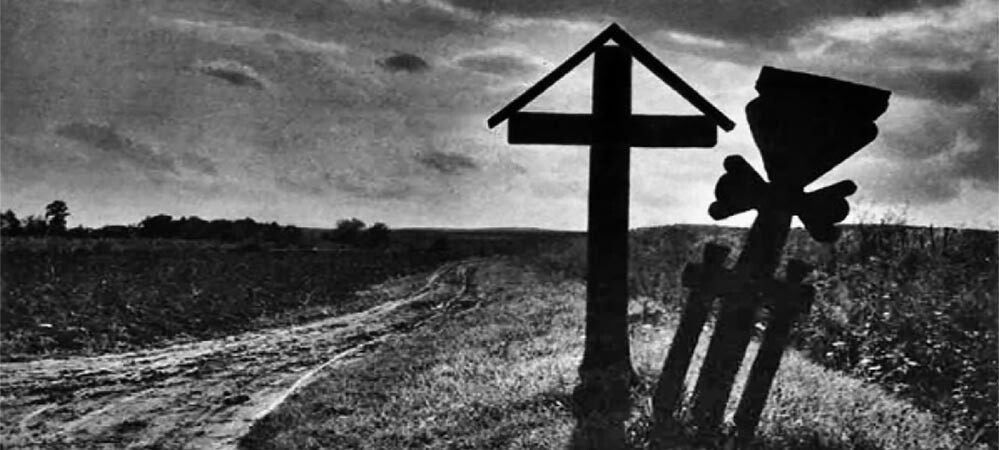Lunca and Fântâna Albă, the massacres of Romanian adults and children by Soviet communism
In 1941, two massacres took place that, like many others committed by communism, are little known in almost the entire world.
The distribution of countries agreed upon by Nazi Germany and the USSR in 1939
In August 1939, Nazi Germany and the USSR signed the Molotov-Ribbentrop Pact, which included a secret protocol by which these two dictatorships divided up several countries (Poland, Lithuania, Latvia, Estonia and Finland) and two territories that were part of Romania: Bessarabia, which for the most part corresponds to the current territory of the Republic of Moldova, and northern Bucovina.
In application of that pact, Germany and the USSR invaded Poland in September 1939 and divided up that country. The USSR invaded Finland on November 30, 1939, an operation that was unsuccessful due to stubborn Finnish resistance. In mid-June 1940, the USSR invaded Lithuania, Latvia and Estonia. At the end of June 1940 it was Romania's turn. After the invasion of the aforementioned Romanian regions, the USSR created the Soviet Republic of Moldova with the territory of Bessarabia, and the northern area of Bukovina was annexed to the Ukrainian Soviet Republic.
Religious persecution against Romanian Christians in Bucovina
As they had already done in 1917, Soviet communists unleashed religious persecution in northern Bukovina against the Orthodox Christians of that region, arresting and murdering dozens of priests. This region had a Ukrainian ethnic majority (47.5% of the population), with 28.3% Romanians and other ethnicities that included Jews, Germans, Poles, Russians and Hungarians. More than 13,000 Romanians from northern Bukovina were deported to Siberia by the Soviets. Due to the situation they suffered under Soviet rule, many Romanians from that region tried to flee to the Kingdom of Romania strong>.
The Lunca Massacre of February 7, 1941
The Soviets committed cruel atrocities against those who attempted that escape. On February 7, 1941, the USSR perpetrated the Lunca Massacre, in which 600 unarmed civilians were killed when they tried to flee to Romania. Among the victims were men, women and children. Soviet troops used machine guns to indiscriminately kill these civilians, burying their bodies in mass graves. Subsequently, the relatives of the survivors were arrested and sent to Siberia, a common practice in the USSR with those who were classified as "traitors."
The Fântâna Albă Massacre of April 1, 1941
On April 1, 1941, an even worse massacre took place. The Soviet NKVD - the fearsome predecessor of the KGB and author, among other crimes, of the Katyn massacre against 22,000 Polish prisoners of war- did A rumor circulated that they were going to allow Romanians from northern Bucovina to pass into Romania, in an attempt to get rid of them. Believing those rumors to be true, several thousand villagers gathered near the border. They were carrying white flags and religious symbols and were detained by the NKVD 3 kilometers from the Romanian border.
Some survivors were buried alive
What came next was a cold-blooded crime. After the villagers ignored NKVD orders, Soviet agents fired their machine guns into the crowd, even though the villagers were unarmed and did not engage in any violence. About 2,000 people were murdered, including men, women, children and babies. As if indiscriminate shooting at unarmed civilians had not been enough, NKVD agents buried the victims in five mass graves. murdered and also some wounded, burying them alive.
The horror of Fântâna Albă did not end there. Some survivors were tortured by the NKVD and thrown into a mass grave, and were also buried alive. In both the USSR and the Romanian communist dictatorship, any reference to the Lunca and Fântâna Albă massacres was prohibited. After the arrival of democracy, in 2011 the Romanian Parliament established April 1 as a day of remembrance for the Romanians murdered by the Soviets in those massacres and also for the victims of the deportations to Siberia.
Today, those brutal massacres remain unknown in most of the world. I hope that these lines contribute to spreading his memory and the memory of his victims.
---
Photo: Institutul Cultural Român.
|
Don't miss the news and content that interest you. Receive the free daily newsletter in your email: Click here to subscribe |
- Most read
- The Pegasus case and how it could end with Pedro Sánchez due to a decision by France
- A large collection of Volkswagen cars hidden in an abandoned mine in Switzerland
- The real reason for Sánchez's victimizing letter using his wife as an excuse
- Theater play is confirmed: Pedro Sánchez does not resign and repeats his conspiracy theory
- US F-35A fighters flying with Polish F-16s over Poland at a time of great tension
- The deployment of Spanish soldiers of the Regulars and BRILAT near Russian territory
- The ten oldest national flags in the world that are still in use today

 ES
ES





Opina sobre esta entrada: